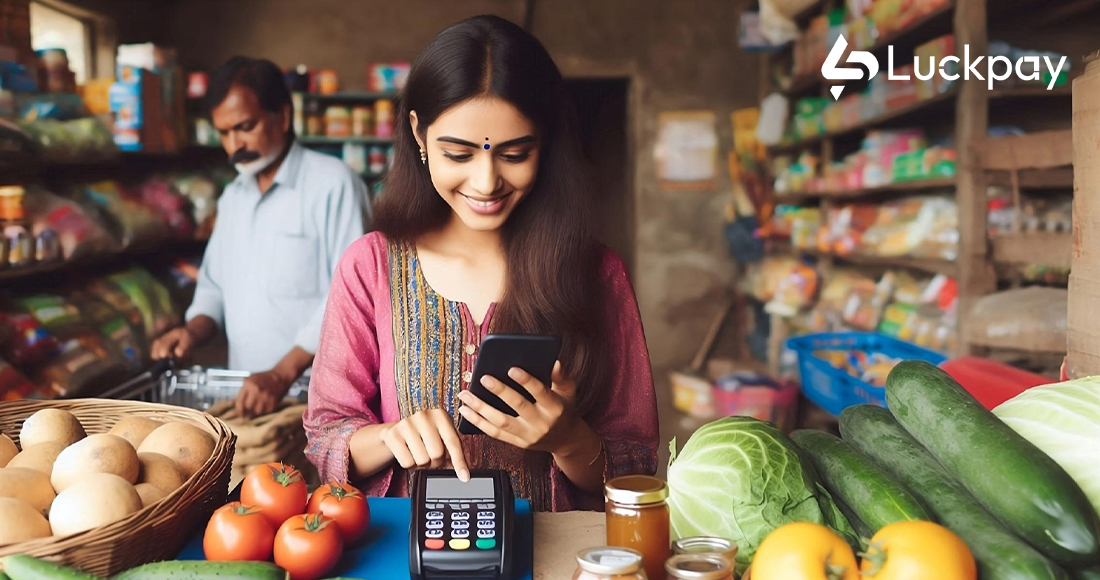Why UPI Is the Future of Digital Payments in India

Have you ever wondered what makes UPI (Unified Payments Interface) so special? Why has it become the go-to payment method for millions of Indians, from street vendors to tech-savvy entrepreneurs? In just a few years, UPI has revolutionized the way India makes digital payments, and the future of India’s economy seems to be intertwined with this groundbreaking technology. But what exactly is driving UPI’s dominance? And why is it hailed as the future of digital payments in India?
Let’s dive into the magic behind UPI and explore why it’s not just a trend, but a force that’s shaping the future of financial transactions in India.
What Makes UPI So Powerful?
It’s no secret that UPI has become a game-changer for digital payments, but what is it about this system that sets it apart? UPI offers a seamless, fast, and secure way to transfer money, making it a favorite among Indians for both personal and business transactions. But let’s break it down:
1. Instant Payments — The Power of Real-Time Transactions
When it comes to payments, speed is everything. UPI makes money transfers instant, something that was a game-changer for India’s traditionally slow banking systems.
Curious question: How can you send money to anyone, anywhere in India, and have it settle in seconds, 24/7? The answer lies in UPI’s underlying technology.
Thanks to real-time payment settlements, UPI allows users to transfer funds at any time — be it 2 AM on a Sunday or in the middle of a busy workday. No more waiting for hours or days like with older banking systems. And the best part? This doesn’t just apply to banks but to anyone, making it a powerful tool for both individual and business transactions.
2. Interoperability — Connecting the Dots Across Platforms and Banks
Another standout feature of UPI is its interoperability. No matter which bank you’re with or what payment app you use, UPI enables transactions between different platforms and banks with ease. Whether it’s Google Pay, PhonePe, or Paytm, all UPI-supported apps talk to each other, giving users a seamless experience across the board.
Fascinating question: How does UPI manage to connect so many different payment platforms and banks? This interconnectedness is a key reason UPI has succeeded in creating a unified payments ecosystem.
This universal access ensures that UPI is not just convenient but accessible to everyone, regardless of the bank or platform they use. You can transfer money from one bank to another in seconds without worrying about the specific app or service your recipient uses.
3. Enhanced Security — Keeping Your Money Safe
With digital payments, security is a top concern. So, what makes UPI so secure? From its robust two-factor authentication to end-to-end encryption, UPI prioritizes user safety at every stage of the transaction. It uses MPINs (Mobile Personal Identification Numbers) and other security features to ensure that only the authorized user can initiate payments.
Intriguing thought: What happens if you lose your phone or someone tries to hack your UPI account? UPI’s multi-layered security protocols ensure your transactions remain safe and that your funds are protected from fraud.
UPI’s secure payment channels and immediate transaction monitoring make it a trustworthy option for millions of Indians. And as digital fraud prevention continues to evolve, UPI is keeping pace with advancements, making digital payments safer than ever.
UPI’s Role in Driving India’s Digital Payment Growth
So, why does UPI matter to India’s economy? It’s simple: UPI isn’t just changing how we pay — it’s changing how we live. By fostering financial inclusion, enabling small businesses to thrive, and reducing the dependency on cash, UPI is helping drive India’s digital payment growth and fueling its economic development.
1. Empowering Financial Inclusion
One of the biggest barriers to financial inclusion in India has been access to banking services, especially in rural areas. UPI has solved this problem by democratizing financial services, making digital payments available to everyone with a mobile phone, regardless of their location or bank affiliation.
Question to ponder: Can a payment system be both inclusive and transformative? UPI is proving it every day by allowing millions of unbanked Indians to step into the digital economy.
Thanks to UPI, people in remote areas can now send money, pay bills, and even access financial services without ever needing to visit a physical bank. This inclusivity is a key factor in UPI’s success in transforming India’s payment landscape.
2. Fueling India’s Digital Economy
As India shifts towards a cashless economy, UPI is leading the charge by making digital transactions not just accessible but desirable. Whether it’s for e-commerce, utility payments, or even paying a local vendor, UPI’s ubiquity means it’s everywhere.
Interesting question: What do e-commerce giants, local shops, and global brands have in common? They all accept UPI payments, making it the backbone of India’s growing digital economy.
The ease of UPI adoption by businesses of all sizes — from online giants like Flipkart to small kirana stores — is one of the reasons why it has played such a central role in India’s digital transformation.
3. Accelerating Economic Development
UPI’s role in boosting business transactions is also key to its economic impact. By enabling instant payments, UPI has accelerated trade, particularly in sectors like e-commerce, retail, and education. Small businesses, too, are reaping the benefits by using UPI to reach a broader customer base and streamline their operations.
Thought-provoking question: How can a simple payment app spark a massive economic shift? The answer is in the way UPI has enabled businesses to run more efficiently, leading to an overall increase in economic activity.
Moreover, UPI plays a pivotal role in government initiatives like Direct Benefit Transfers (DBT), ensuring that subsidies and financial aid reach the right people directly and without delay.
The Future of UPI: More Than Just Payments
The future of UPI goes far beyond just facilitating payments. It is positioning itself as the gateway to India’s financial ecosystem, opening the door to new possibilities like UPI AutoPay for subscriptions, cross-border payments, and integration with new-age financial services. The introduction of UPI 2.0 and other upgrades shows that UPI is constantly evolving to meet the demands of a digital-first world.
Looking ahead: How will UPI continue to transform the financial landscape in the coming years? As UPI evolves, expect more features that integrate seamlessly into everyday life, making India’s digital payments system more robust and inclusive than ever.
Conclusion: UPI — The Future is Now
With its instant transactions, unrivaled interoperability, and robust security features, UPI is not just the future of digital payments in India — it is the present. As it continues to evolve and expand, it will only grow stronger, becoming an even more integral part of India’s economic development. Whether you’re a business owner, a student, or just someone sending money to a friend, UPI is shaping the way we interact with money and transforming India into a truly cashless society.
Are you ready to embrace the future of payments? The journey is just beginning, and UPI is leading the way.



